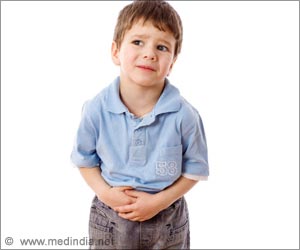In India the poor are visible everywhere in villages, hamlets, in forestland or degraded lands, along coastal regions, in the mountains, in urban centres and in industrial areas.

To reduce poverty you need to first identify who is poor. You need a set of parameters that would clearly show up who is resourceless, who is pushed to the edge of survival, who needs benefits of development to reach them on a priority basis.
There are a number of agencies and bodies that have attempted to define poverty. According to the NC Saxena Committee, under Rural Development Ministry, half of India's population is poor. The guidelines by the noted economist, Arjun Sengupta pegs poverty figures at 77 percent, while National Development Council's Suresh Tendulkar Committee holds that India has only 37.2 percent poor.
All this is very well but why is poverty not reducing? What are the obstacles? Growth is evident in the economy, across several sectors. In terms of development, there are a number of schemes for tackling poverty, yet the rate of poverty is increasing. According to some sources, the number of people who go to bed hungry everyday in India is equal to around the population of a dozen countries in the world. The condition of those at the bottom end of the ladder is precarious.
With the food security net still leaving out a vast chunk of the population, with malnutrition dogging large sections of the poor, the measure of poverty adopted by the government which takes into account the number of calories an individual consumes is completely inappropriate.
Is growth essential for equity and in a more fundamental way for poverty eradication? Or putting it in another way is growth enough to ensure equity? We are coming to the end of the 11th 5-year plan, which has been hailed as one of the most successful with the growth rate touching almost double digits in the first two years, in 2007 and 2008.
Advertisement
Is the government really intent on removing poverty or is it too engrossed in crunching the numbers of the poor, in working and reworking the definition of the poor as has been thrown up by different committees? There is a danger of the issue being lost somewhere in the approach to poverty figures and definitions. This ambiguity would then reflect in how schemes meant for poverty alleviation are planned and implemented.
Advertisement
The Planning Commission has used a particular methodology to come to the figure of 36 percent poor in the country. The state figures show much higher figures but the Central view prevails. What then happens to all those who fall between the cracks?
It is interesting how the findings of the Arjun Sengupta committee on the 'unorganised' sector inform this process. According to this methodology, the most simple, appropriate and practical way to gauge poverty is the average daily income of an individual. According to the report, there are close to 80 crore 60 lakh people in the country whose average daily income is between Rs. 9/- to Rs. 20/-. This section would qualify as poor, by any set of standards.
Ultimately, whatever the methodology adopted, it has to register not just the numbers of poor (quantitative aspect) but reflect on the qualitative aspect of what constitutes poverty. A gut response sometimes is the correct one. Ask any person at random; what poverty means and invariably one would get a uniform response.
A person who does not have enough to eat is poor; one who is homeless is poor, one who cannot send their children to school is poor, one who cannot afford medical aid or treatment is poor. In a very fundamental sense, these should be the driving forces of designing any poverty enumeration exercise and for collating the responses from the ground.
Yes we have several schemes in place for poverty alleviation, which have doubtless been devised based on the estimation of poverty. The question is, whether they are able to provide a safety net of basic requirement of life to the last person. While the job guarantee of 100 days under MNREGA is laudable, let us not forget that the beneficiaries may very well face joblessness over 265 days.
The distribution of wheat and rice through the Public Distribution System (PDS) meets some core food grain requirements of the poor. It provides for food security in a very basic sense but let us not fool ourselves into believing that it will lift people out of poverty.
Here again, stepping back to get a macro view would help. What is it that we are trying to achieve? What is the yard-stick with which the policy planners and implementation agencies will measure themselves? All the systems, methodologies need to follow a basic guideline.
The Charkha Development Communication Network feels that unless crores of people in this country are able to earn a basic living, have enough to eat, send their children to school, get medical treatment for their families, it cannot be said that poverty is being tackled, much less eradicated. Somehow, the sensitivity of a qualitative assessment has to mark a more hard-nosed approach of including or rejecting a person or family on the basis of quantifiable parameters. By Sunil Amar
Source-ANI








